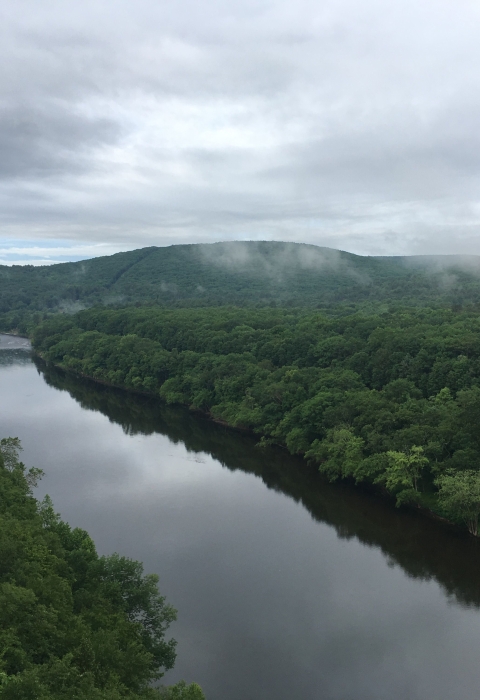Collaborative Conservation
There is tremendous satisfaction in doing things on your own; there is power in finishing a project solo. But in the conservation world, there’s rarely an instance where efforts don’t involve a variety of organizations and multitudes of people — we’re talking partnerships.
Over the past two years, a critical funding source, the Bipartisan Infrastructure Law Bipartisan Infrastructure Law
The Bipartisan Infrastructure Law (BIL) is a once-in-a-generation investment in the nation’s infrastructure and economic competitiveness. We were directly appropriated $455 million over five years in BIL funds for programs related to the President’s America the Beautiful initiative.
Learn more about Bipartisan Infrastructure Law , has created tremendous opportunities to find, fund and further conservation work with U.S. Fish and Wildlife Service partners — states, federal agencies, Tribes, nonprofits and even private citizens.
Saving species, boosting community resilience to climate change climate change
Climate change includes both global warming driven by human-induced emissions of greenhouse gases and the resulting large-scale shifts in weather patterns. Though there have been previous periods of climatic change, since the mid-20th century humans have had an unprecedented impact on Earth's climate system and caused change on a global scale.
Learn more about climate change , providing access to the outdoors, cleaning up drinking water — these are just a few of the goals the Service shares with partners. Through collaboration, we can meet them sooner rather than later. And to be honest, the sooner, the better!
Since 2016, the Service’s Delaware River Basin Restoration Program staff have sought partnerships with those working on conservation efforts across the Delaware River watershed. Whether funding a community pollinator garden in Pennsylvania (partner: Bartram’s Garden), restoring freshwater marsh in New Jersey (partner: Ducks Unlimited), or replacing culverts on the Upper Delaware in New York (the Service’s New York Field Office in collaboration with Trout Unlimited), the benefits of these partnerships are spread far and wide.
Fish, Wildlife and People
Given the name, it may seem like the Service’s mission is solely for the benefit of fish and wildlife, but we’re here for people, too! Projects like installing boat ramps (partner: Pennsylvania Fish and Boat Commission) bring communities closer to nature, providing them opportunities to connect with the very things we are trying to conserve and protect. The Commission received a grant, partially funded by the Bipartisan Infrastructure Law, to ensure Pennsylvania’s recreational anglers and boaters have free access to safe, clean, and updated boating and fishing facilities, in multiple tributaries within the Delaware River watershed.
By engaging residents in outdoor activities, we hope to instill an appreciation for clean water, safe recreational access, fish passage fish passage
Fish passage is the ability of fish or other aquatic species to move freely throughout their life to find food, reproduce, and complete their natural migration cycles. Millions of barriers to fish passage across the country are fragmenting habitat and leading to species declines. The U.S. Fish and Wildlife Service's National Fish Passage Program is working to reconnect watersheds to benefit both wildlife and people.
Learn more about fish passage and ecosystem restoration.
“When communities recognize the value of the natural resources in their own backyards, like the incredible Lackawaxen River Trail, and embrace fishing and boating access along these waterways, the benefits are undeniable,” said Pennsylvania Fish and Boat Commission Executive Director Tim Schaeffer. “Their pride in these recreational amenities will translate into greater resource stewardship.”
After all, it’s through experience that we learn how we feel about things, what we care about, and how we want to interact with our environment. Partners are often the first line of communication with communities about local conservation efforts. Getting buy-in from residents ensures there will be support for projects, and that they’ll meet the needs of people AND wildlife.
Investing in America
To date, 17 Delaware Program projects have received Bipartisan Infrastructure Law funding. This massive, national funding source will ensure the important work of the Service and its partners continues. This investment will result in the removal or bypass of nine barriers to fish passage, opening 66 stream miles. In 2022, 50% of projects directly benefit under-served communities — in 2023, that number has been raised to 100%!
We’re excited to see impacts from these future projects, aren’t you!?







